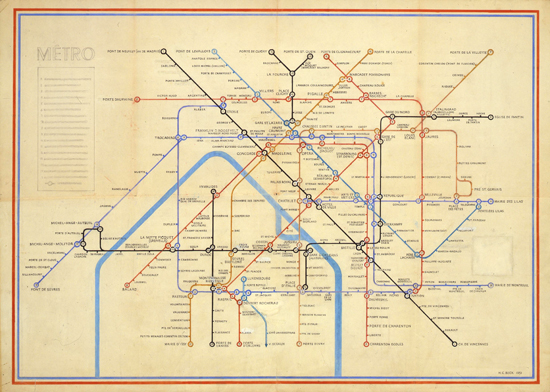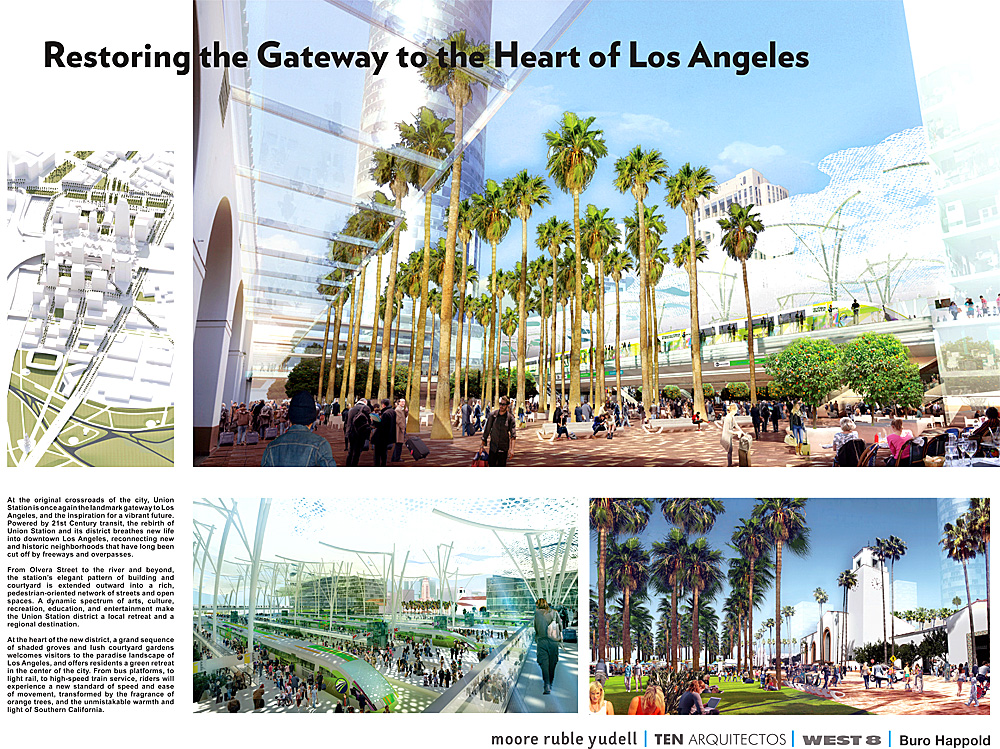
See also Metropolitana di Roma logo.

See also Metropolitana di Roma logo.

Pedestrians on Broadway in this area can stumble upon an Ivy League university or gaze through the windows of Tom’s Restaurant, of “Seinfeld” fame. They can find a copy of “Pride and Prejudice” for $2 at a stand on West 112th Street, and, four blocks south, a taco for 50 cents more. They can even sip mojitos at Havana Central at the West End, near West 114th Street.
But they will never find West End Avenue between Broadway and Riverside Drive.
Mr. Tauranac, who has for years assailed Mr. Vignelli for such inaccuracies as having Bowling Green north of Rector Street, said the revelations had forced him to re-evaluate his harsh judgments of Mr. Vignelli, 81. “It really has dulled my attack, that’s for sure,” Mr. Tauranac said.
Moments later, he retrieved from his office the May 2008 copy of Men’s Vogue, featuring an updated Vignelli map “every bit as terrible a map as he designed in 1972,” to Mr. Tauranac’s eye.
“I’m happy to see that he’s mellowing,” Mr. Vignelli said.
via On New York Subway Map, a Wayward Broadway and Phantom Blocks – NYTimes.com.
The current map is an abomination of design, the revelation of more mistakes just compounds the existing travesty. Not that Vignell’s 1972 map is any better with oversimplification, a precious use of color and lines rendering it more art piece than functional map or diagram.
It seems every designer is trying to reinvent Harry Beck’s amazing diagram for both the Paris Metro and the London Underground:



The problem being that Beck’s Underground Map is uniquely suited to London’s system, not New York City subway’s combination of express/local lines, geography and history of being composed of three different subway companies.
See also

In April 2011, Metro completed the acquisition of Union Station and the approximately 40 acres surrounding the historic rail passenger terminal. As part of the Los Angeles Union Station Master Plan, the six short-listed teams were required to submit one Vision Board showing a high-concept vision for Union Station in the year 2050. The Vision Boards are not part of the formal evaluation process, but rather a means to begin the public engagement process and ignite inspiration about Union Station as a multi-modal regional transportation hub. The Vision Boards were presented to the public at a viewing event on April 25th, 2012.
The short listed teams all include multiple firms, and are led by the following prime contractors:
All six teams are required to do the following during the master planning phase:
Metro is in the evaluation process and will bring a recommendation for the USMP consultant team to the Board of Directors on June 28th, 2012 with public announcement on or around June 17th.
Below are the Vision Boards:





Part of the conventional wisdom about transit which prevents spending real money on quick headways is that “There’s no market. People aren’t using that route. Why should we be running empty buses?”
My quick answer to that old saw is that just as with roads, with transit, supply induces demand. If you offer a rich ‘connection pipe” (to garble Walker’s terminolgy) then people will use it and people will get used to the service and presto you have political support. People support things (politically) that they use.
It's all about the headways. Period. – City Comforts, the blog.

For those of you following at home, we have been following the trials and tribulations of the now canceled Access to the Region’s Core transit rail tunnel – a new pair of tunnels under the Hudson River for New Jersey Transit. New Jersey Governor Chris Christie famously canceled the project in favor of shifting the more than $4 billion to the road transportation trust fund, eliminating the need to raise gas taxes (presently one of the lowest in the nation). The New York Times reports that Report Disputes Christie’s Reason for Halting Tunnel Project in 2010:
The report by the Government Accountability Office, to be released this week, found that while Mr. Christie said that state transportation officials had revised cost estimates for the tunnel to at least $11 billion and potentially more than $14 billion, the range of estimates had in fact remained unchanged in the two years before he announced in 2010 that he was shutting down the project. And state transportation officials, the report says, had said the cost would be no more than $10 billion.
Mr. Christie also misstated New Jersey’s share of the costs: he said the state would pay 70 percent of the project; the report found that New Jersey was paying 14.4 percent. And while the governor said that an agreement with the federal government would require the state to pay all cost overruns, the report found that there was no final agreement, and that the federal government had made several offers to share those costs.
In fact, the GAO report1 makes clear that the State of New Jersey was on the hook for 32% of the total cost – less than half of Gov. Christie’s exaggerated claim.2 The report also makes clear that the project cost did not materially change, but rather was being refined as more detailed information came to light.
While ARC had some flaws – chiefly being composed as a deep-cavern terminal which was not directly connected to the existing Penn Station – the project was necessary to relieving the Hudson River crossing bottleneck: currently one 15-minute train disruption in the existing tunnel can delay as many as 15 other NJT and Amtrak trains. The chief beneficiary was New Jersey Transit riders who would now have a one-seat ride to Manhattan; secondary effects would be less cars on the road (meaning faster commutes and less pollution) and an increase in demand for housing in New Jersey communities close to NJT stations. All of this was a net-positive for New Jersey.
But Governor Christie3 killed the project under the aegis of fiscal responsibility, but was really all about keeping taxes low:
Canceling the tunnel, then the largest public works project in the nation, helped shape Mr. Christie’s profile as a rising Republican star, an enforcer of fiscal discipline in a country drunk on debt. But the report is likely to revive criticism that his decision, which he said was about “hard choices” in tough economic times, was more about avoiding the need to raise the state’s gasoline tax, which would have violated a campaign promise. The governor subsequently steered $4 billion earmarked for the tunnel to the state’s near-bankrupt transportation trust fund, traditionally financed by the gasoline tax.
Canceling ARC was nothing more than a naked political gambit, and the GAO called the Governor on his deceit. In Gov Christie’s world, it is better to spend the money on short-term gains, than to invest in an infrastructure project which would create long-term stability in a state which depends on New York for its survival.
At what point do we carve the New York-Connecticut-New Jersey MSA4 out of New York and New Jersey to create the 51st State – the State of New York City? Because trying to coordinate rational land use and transportation policy across state lines is not working at all.

The LIMTV (linear induction motor test vehicle) is tested at the Department of Transportation’s high-speed ground test center (now owned and operated by Association of American Railroads) near Pueblo, Colorado, in March of 1973. The experimental vehicle was designed to operate at speeds up to 250 miles per hour, using electro-magnetic forces for noiseless propulsion.
While not exactly the SUPERTRAIN, the 1979 Love Boat-style show set on a huge nuclear-powered train zipping from NYC to LA which I’m obsessed with, the LIMTV undoubtably influenced SUPERTRAIN’S aesthetic. Except LIMTV actually helped pave the way for an actual product using linear induction-based systems, having found a niche with the aid of Bombardier’s Advanced Rapid Transit system. Notable installations are in Vancouver’s SkyTrain and NYC’s JFK AirTrain (below).
The South Ferry Terminal is a new station of the 1 Line in Lower Manhattan replacing the original turn-back loop which can only fit the first five cars. This project was slated to open in early 2009 but has been plagued with accessibility issues and other performance issues.
Today is the official Grand Opening
The first new subway line in over 30 years, the Second Avenue Subway is halfway through Phase One. Phase One includes new tunnels from 105th Street and Second Avenue to 63rd Street and Third Avenue, with new stations along Second Avenue at 96th, 86th and 72nd Streets. Once Phase One is complete, the Q train will be extended from its current terminus at Lex/63rd Street up Second Avenue stopping at 72nd, 86th, and 96th Streets. Phase Two (125th St. to 96th St.) is scheduled for 2014-2017, Phase Three (63rd St. to Houston St.) for 2015-2018 and Phase Four (Houston St. to Hanover Sqr.) 2017-2020. The main reason the project’s schedule is so long is the lack of secured funding.
Extension of the 7 Line to service the existing Jacob K. Javits Convention Center (the extension was originally proposed for the failed 2012 Olympic Bid and the failed NY Jets Stadium at Hudson Yards). Currently, there is a tunnel boring machine running north from 29th St/11th Ave.
East Side Access will bring Long Island Railroad service to Grand Central Terminal using the existing 63rd Street Tunnels and two new sets of tunnels connecting both ends of the 63rd Street Tunnels. One set of approach tunnels pass under the existing Sunnyside Yards while the other tunnels pass under the existing Metro North Tunnels on Park Avenue and terminate at Grand Central. Project is estimated to be complete in 2015.
Stations served by the 2, 3, 4, 5, A, C, E, J, M, R, W and Z services will be rehabilitated and connected via an east-west underground passageway designed by Grimshaw Architects. A high-visibility Transit Center will be constructed, with entrances on Broadway between Fulton Street and John Street. The station will be handicapped accessible.
Designed by Santiago Calatrava, this transit center will house the terminus for the PATH trains at World Trade. Initial foundations are complete and sections of the structure have been erected.
ARC is a new two-tunnel (single track) project creating a single-seat trap for New Jersey Transit riders to Penn Station doubling the current capacity. Creation of two new Hudson River tunnels and new deep-cavity terminal connected to Penn Station. The first contracts were announced last week.
This project has a particular place in my heart, a project which typifies large capital construction in New York City. Last week Senator Schumer was seeking federal funding for Moynihan Station with Amtrak moving into the future Moynihan Station. Currently the project is in negotiations between the City, State, Federal governments and the two developers involved in the project Related and Vornado. Keep wishing.